Despite the competitive state of the market, all the signs point to the growing popularity of premium foods, says James Durston
You only have to battle the crowds at Borough Market in London or at one of the burgeoning farmers’ markets around the country to realise that Britain, once the land of the fry-up, is turning into a nation of foodies.
But the popularity of this premium shopping experience is not limited to open markets and a few exclusive speciality stores.
The likes of Tesco, Waitrose and northern retailer Booths are cashing in on the growing demand for premium foods. Tesco’s Finest range forms part of a more comprehensive offer, while Waitrose and Booths play on pure premium credentials. Meanwhile, Marks & Spencer has announced food sales up 6.3% in the second quarter this year and Whole Foods Market, the US natural and organic foods store, has announced plans to come to London in 2007.
Fortnum & Mason’ MD Beverley Aspinall says people are returning to ‘genuine foods’ that are found outside the supermarket sector. The company’s UK profits last year were just short of £450,000 from £71,000 the year before. It plans to extract the full potential of this growth by offering gourmet ready meals and food-to-go (see p42).
But how far is premiumisation likely to go? Does it only work for particular categories and who’s driving it, consumers or retailers?
There’s no doubt that over the past few years consumer demand has begun to polarise, favouring both the premium and value ends of the spectrum. James McCoy, senior analyst at Mintel, says: “People like to be treated in a premium way; it’s been a trend for several years now. But there is always a demand for value. There is a lot of anecdotal evidence of people picking and choosing their premium products, taking budget pasta for example, but buying a premium pasta sauce.”
Joanne Denney-Finch, CEO at IGD, believes there is plenty of scope for growth in the premium sector. “We have certainly seen an increase in the number of premium stores over the past few years, offering exposure to a greater number of potential customers. We predict there is still considerable growth left in this market. British consumers want better quality and, in particular, more local and regional foods.”
You only have to look at the growth in certain food brackets to see how consumption patterns have changed. Take bread sales, for example. According to TNS, in June 2000 super-premium bread sales were just over £6m, while value bread sales were just below £5m. Today, super-premium bread sales have more than doubled to almost £12.5m, while value bread sales have fallen to £2m.
Fresh soup’s share of the soup sector has risen 5% over the past four years, while instant soup has fallen 5%. Mintel data shows that sales of premium sausages increased 21.2% between 2002 and 2004, and that premium crisps were up 15.8% over the same period. Standard crisps were down 7%. Premium beers, continental cheeses and sliced meats, olives and vine tomatoes are also all experiencing growth.
Russell White, joint MD of supplier Rivermill Foods, which has just launched a premium range of Italian biscuits with Lloyd Grossman, thinks this is only the tip of the iceberg. “I definitely think there is more to be had. There is a great opportunity for brand owners to look beyond their manufacturing capabilities to deliver the product that is right for their brand and customers.”
However, premium seems to mean different things to different people. IGD research shows that for 51% of consumers, premium means ‘made with higher quality ingredients’ and that fresh foods are most likely to be considered as premium products. Indeed, a good offer in fresh meat and produce can be used by shoppers to rate a retailer, says IGD’s 2005 Shopportunities report on the premium sector.
Provenance is perhaps the most topical issue at the moment. Buying from farmers’ markets is the surest way of knowing where your food has come from and the growth in this sector is significant. Gareth Jones, managing agent for the National Farmers’ Retail and Markets Association (Farma), says: “We had one farmers’ market in the UK in 1997; now we have more than 500. People want great-tasting, local, fresh food and traceability is really important. But it’s the local thing that is critical and the fact that they are supporting the local community.”
Research from Farma shows that 90% of people in the UK would like to buy from farmers’ markets and that 30% of consumers already do. In France, where provenance and quality are regarded as the norm, there are about 36,000 farmers’ markets and Jones thinks this suggests there is room for more in the UK. “The amount spent in farmers’ markets could treble from £200m to £600m,” he says. “There’s also the welfare aspect. After the recent publicity about the welfare standards of chickens at some farms, there was a massive growth in the demand for farmers’ chickens.”
UK consumers are becoming much more discriminating, not only about the quality of the food they buy, but also about the implications of their purchases.
A Waitrose spokesman says: “Our strong trading clearly demonstrates that customers understand our value proposition - a range of quality food, honestly priced, produced to the highest possible standards, with full traceability and from suppliers who are fairly rewarded, sold from shops that enrich their local communities.”
Everyday products from the past have also made a return under the premium banner. Speciality potatoes and roast beef on the bone, for example, phased out when mass production of food started, are back on the shelves. McCoy says: “We’re really just returning to a lot of the foods that our grandparents would have seen. So we’re not seeing anything new; we’re just paying more for what we used to eat in the past.”
The situation regarding personal finances has also changed. TNS figures show that household disposable income per person today is almost 2.5 times what it was in 1970. And what we spend on food and drink as a proportion of total household expenditure has dropped dramatically, from 24% in 1963 to 9% today.
Ed Garner, communications manager at TNS, says: “We have more money and food costs less. It’s a rich combination for getting people to trade up.”
And they are prepared to trade up. A study by Harris Interactive found that 64% of UK consumers are willing to pay a bit extra for higher quality foods.
When it comes to retailers, McCoy points out that in some categories they have had no choice but to push the premium ranges, actually driving the trend themselves. “Bread, for example, is a saturated category, so the only way for retailers is to up the margin. People are actually buying less bread now, but it’s of a higher quality than before and more expensive, so sales values go up.”
Premium own-label ranges by the big four multiples have all increased several-fold over the past four or five years. Tesco now runs 240 Tesco Finest lines, Sainsbury runs 190 Taste the Difference lines, Asda runs 140 Extra Special lines and Safeway/Morrisons runs about 70 The Best lines, although it peaked in 2004 with just over 100.
However, the number of premium own-label lines has levelled off in recent months, though. McCoy explains: “The danger with premium brands is that they will cannibalise sales of other products. Putting a quality mark on some lines suggests that the others are of a lower quality. And then, where do you go after premium?”
The performance of Whole Foods Market after 2007 when it opens its London store, which will complement the seven smaller Fresh and Wild stores it bought in the UK last year, will be watched with interest. Edwin Booth, chairman of Booths, says: “It will be very interesting to see how much the market can take, particularly in a city environment.”
Booths
Northern retailer Booths Supermarket is emerging as one of the most successful premium grocers in the UK. James Durston considers why
Edwin Booth, chairman of premium retailer Booths Supermarkets, has good reason to be pleased at the moment. The company, placed third in The Grocer’s ranking of the Top 50 independent retailers in February with sales of £189.5m, is emerging as one of the most successful premium retailers in the UK. Perhaps this is why he indulged himself with a few jibes at Sainsbury and Asda during his presentation at Barclays’ retail conference last week. “Sainsbury’s are advertising mince pies under their ‘Try Something New Today’ slogan - they’re available every bloody day of the year! Asda announced growth of 2.4% - oh, whoopee!”
But it is more than Booth’s sharp wit that the big grocers should beware of. His company has seen like-for-like growth of 7% for the past four years and 4.5% so far this year. “Our sales per square foot are nibbling at Waitrose and are way ahead of some of the other big names,” Booth says.
There are plans to extend the portfolio of 26 stores, currently situated in Lancashire and surrounding counties. “We’re not going to throw ourselves into the lion’s den down south, but it is one of my ambitions to open a store in Edinburgh.”
Booth says the company’s success is down to its commitment to the local area and a willingness to innovate. A ready-meal range for children - Martha and Lawrence for Children - has just been launched. Also just announced is a new range of eight gourmet potatoes, all from Northumberland. Earlier this year, Booths also ran a range of ‘Dug This Morning’ potatoes, harvested in Lancashire.
It has also worked with local farmers to produce a milk line replicating the style and branding in the bottled water sector. Innovation is key, too, and Booths is working with the environmental health agency to offer a semi-refrigerated cheese like the kind seen in France.
The company’s wine website claims to offer the world’s biggest range of wines, about 30,000. Booths has also extended its offer in its 18,000 sq ft two-level Kendal store with an upmarket restaurant and speciality food shop, Artisan. And in May it started stocking “the most expensive vegetable in the world” - the hop shoot at £2.99 for 100g.
Booth thinks it is important to continue to innovate. “Customers tell me what they don’t like now, but they can’t tell me what they want in the future. I have to tell them that, to provide the stimulus for their spending.”
Other multiples should take note. Anyone who can persuade customers to spend £2.99 on 100g of hop shoots is worth listening to.
Fortnum & Mason
Even Tesco is viewed as competition as the upmarket London department store heads towards its 300th anniversary in 2007. Simon Mowbray reports
It may sound like a flight of fancy to pitch such a famous London landmark against the likes of Tesco, Sainsbury, Waitrose and Marks & Spencer in the battle for the food and drink pound. After all, Fortnum & Mason has been a byword for the very finest food that the world has to offer since Messrs William Fortnum, a footman in Queen Anne’s household, and Hugh Mason, a St James’s market trader, joined forces in 1707 to open a grocery store at 181 Piccadilly.
Yet Beverley Aspinall, the department store’s recently appointed MD, believes that, at least at the upper end of the food and drink spectrum, these are exactly the retailers that must be considered as competition.
The comparison, she admits, is a bit disingenuous, but it masks a serious point: if Fortnum - best known for its speciality teas, luxury products and Christmas hampers - is to carry on thriving into its fourth century, then it must keep up with the same sort of reinvention that has seen it survive the fall of the British Empire, two world wars and numerous recessions.
During its lifetime, the retailer has had to manoeuvre itself to deal with dozens of landmark events and trends, including the creation of the Georgian middle class and its newfound disposable income, the demand for an in-store postal service prior to the setting up of the GPO in 1839 and the 1846 creation of the Shopworkers’ Trade Union, which the retailer used to show off its modern thinking by actively encouraging employees to join. In the 1920s, Fortnum dived headlong into the Jazz Age by offering ladies’ and children’s clothes for the first time, as kitchenware and perfumes also joined the line up.
Wind on 80 years and Aspinall - who joined the Weston family’s privately owned company in February from her role as MD of the John Lewis Partnership’s Peter Jones department store in London - finds herself at the head of an institution that is arguably on the back foot after earlier this year posting a plunge in pre-tax profits by nearly half to £351,000 from £638,000 the year before. The poor result, says Aspinall, was down to a restructuring of its international business, which she says Fortnum had somewhat lost control of after sending goods all over the world through a network of wholesalers. UK profits during the period were actually up to £447,000 from £71,000 the year before - mainly bolstered by food - and the company is now more intent on growing slowly but surely overseas by handling its own affairs. It has just opened its third concession in Japan and there are also plans to expand a small but healthy mail order service in the US.
Back in London, an imminent £24m revamp of the Piccadilly operation (its only other UK outlet is at Heathrow Terminal 2) is rather more pressing. It will see the store’s five trading floors opened up with a central atrium and a doubling of space for its food and drink offer that will eventually take up 25,000 sq ft of the total 65,000 sq ft trading space. Ambient food will remain in its ground-floor home, while fresh offerings, wine, beer, spirits and a wine bar will occupy the lower ground floor. Clothing was ditched in July - only lingerie and fashion accessories remain - and Aspinall’s strategy will revolve around food and drink, entertaining and celebration.
By far the most important plank of this strategy, says Aspinall, will be food and drink, which already accounts for 70% of the retailer’s sales with 5,000 different product lines on offer. Plans include adding ‘Friday Night’ gourmet ready meals into the mix, as well as having a greater crack at the eating-on-the-hoof London lunchtime market.
Part of this will involve changing the way infrequent shoppers view the store, particularly local office workers, who it is hoped can be persuaded to pop into Fortnum to pick up their evening meal instead of, say, going in to the Marks & Spencer Simply Food outlet on the other side of the road. “We need to develop regular shopping,” says Aspinall. “We also want shoppers to feel that they can come in and buy something special, but not so special that they wouldn’t just have it at home on a Friday night.”
There is a precedent here, insists Aspinall. “We have been here for 300 years and there isn’t much that the company hasn’t done in that time. For example, pre-prepared food for dinner parties was a key feature from at least Victorian times for many decades, but we stopped it some years ago. That idea has since been copied by lots of retailers, including Waitrose and M&S.”
Keeping tabs on the opposition - even the likes of Tesco and Asda - appears to be a must, although quite how often Aspinall joins the throngs at the tills in the multiples is hard to gauge. She says she is a regular Waitrose shopper and that she admires the retailer. Shopping at Tesco, which she also does from time to time, is a “less edifying experience”, she says, but also has its merits. “Shopping there (at Tesco) is purely a functional task for me, but it serves its purpose in certain areas.”
Nevertheless, Aspinall suggests that the parallels to be drawn between Fortnum and the major chains are not necessarily so ridiculous, an example being the race to find the next great product, such as Fortnum did in 1886 when it became the first British retailer to stock Heinz Baked Beans, which it still does. “It is still all about looking for those unusual products from around the world that will interest shoppers,” she says.
There is also no shame in pandering to consumer demands, particularly in the wake of food scares such as this year’s Sudan 1 dye outrage, says Aspinall. Outlets such as Fortnum are hardly alone in this either, she adds, citing Waitrose, where shoppers can no longer buy a ‘normal’ egg, such is the demand for free range and organic.
“I do believe that people are running scared of the supermarkets a bit, although they also accept the need for somewhere to buy everyday products. But people are also going more to farmers’ markets, for example, which is all part of going back to foods that may be in short supply but are genuine. We are very much part of that,” says Aspinall.
“We are very proud of the story of our food and where it comes from, whereas the story of much of the food on offer in the supermarkets is better kept silent.”
You only have to battle the crowds at Borough Market in London or at one of the burgeoning farmers’ markets around the country to realise that Britain, once the land of the fry-up, is turning into a nation of foodies.
But the popularity of this premium shopping experience is not limited to open markets and a few exclusive speciality stores.
The likes of Tesco, Waitrose and northern retailer Booths are cashing in on the growing demand for premium foods. Tesco’s Finest range forms part of a more comprehensive offer, while Waitrose and Booths play on pure premium credentials. Meanwhile, Marks & Spencer has announced food sales up 6.3% in the second quarter this year and Whole Foods Market, the US natural and organic foods store, has announced plans to come to London in 2007.
Fortnum & Mason’ MD Beverley Aspinall says people are returning to ‘genuine foods’ that are found outside the supermarket sector. The company’s UK profits last year were just short of £450,000 from £71,000 the year before. It plans to extract the full potential of this growth by offering gourmet ready meals and food-to-go (see p42).
But how far is premiumisation likely to go? Does it only work for particular categories and who’s driving it, consumers or retailers?
There’s no doubt that over the past few years consumer demand has begun to polarise, favouring both the premium and value ends of the spectrum. James McCoy, senior analyst at Mintel, says: “People like to be treated in a premium way; it’s been a trend for several years now. But there is always a demand for value. There is a lot of anecdotal evidence of people picking and choosing their premium products, taking budget pasta for example, but buying a premium pasta sauce.”
Joanne Denney-Finch, CEO at IGD, believes there is plenty of scope for growth in the premium sector. “We have certainly seen an increase in the number of premium stores over the past few years, offering exposure to a greater number of potential customers. We predict there is still considerable growth left in this market. British consumers want better quality and, in particular, more local and regional foods.”
You only have to look at the growth in certain food brackets to see how consumption patterns have changed. Take bread sales, for example. According to TNS, in June 2000 super-premium bread sales were just over £6m, while value bread sales were just below £5m. Today, super-premium bread sales have more than doubled to almost £12.5m, while value bread sales have fallen to £2m.
Fresh soup’s share of the soup sector has risen 5% over the past four years, while instant soup has fallen 5%. Mintel data shows that sales of premium sausages increased 21.2% between 2002 and 2004, and that premium crisps were up 15.8% over the same period. Standard crisps were down 7%. Premium beers, continental cheeses and sliced meats, olives and vine tomatoes are also all experiencing growth.
Russell White, joint MD of supplier Rivermill Foods, which has just launched a premium range of Italian biscuits with Lloyd Grossman, thinks this is only the tip of the iceberg. “I definitely think there is more to be had. There is a great opportunity for brand owners to look beyond their manufacturing capabilities to deliver the product that is right for their brand and customers.”
However, premium seems to mean different things to different people. IGD research shows that for 51% of consumers, premium means ‘made with higher quality ingredients’ and that fresh foods are most likely to be considered as premium products. Indeed, a good offer in fresh meat and produce can be used by shoppers to rate a retailer, says IGD’s 2005 Shopportunities report on the premium sector.
Provenance is perhaps the most topical issue at the moment. Buying from farmers’ markets is the surest way of knowing where your food has come from and the growth in this sector is significant. Gareth Jones, managing agent for the National Farmers’ Retail and Markets Association (Farma), says: “We had one farmers’ market in the UK in 1997; now we have more than 500. People want great-tasting, local, fresh food and traceability is really important. But it’s the local thing that is critical and the fact that they are supporting the local community.”
Research from Farma shows that 90% of people in the UK would like to buy from farmers’ markets and that 30% of consumers already do. In France, where provenance and quality are regarded as the norm, there are about 36,000 farmers’ markets and Jones thinks this suggests there is room for more in the UK. “The amount spent in farmers’ markets could treble from £200m to £600m,” he says. “There’s also the welfare aspect. After the recent publicity about the welfare standards of chickens at some farms, there was a massive growth in the demand for farmers’ chickens.”
UK consumers are becoming much more discriminating, not only about the quality of the food they buy, but also about the implications of their purchases.
A Waitrose spokesman says: “Our strong trading clearly demonstrates that customers understand our value proposition - a range of quality food, honestly priced, produced to the highest possible standards, with full traceability and from suppliers who are fairly rewarded, sold from shops that enrich their local communities.”
Everyday products from the past have also made a return under the premium banner. Speciality potatoes and roast beef on the bone, for example, phased out when mass production of food started, are back on the shelves. McCoy says: “We’re really just returning to a lot of the foods that our grandparents would have seen. So we’re not seeing anything new; we’re just paying more for what we used to eat in the past.”
The situation regarding personal finances has also changed. TNS figures show that household disposable income per person today is almost 2.5 times what it was in 1970. And what we spend on food and drink as a proportion of total household expenditure has dropped dramatically, from 24% in 1963 to 9% today.
Ed Garner, communications manager at TNS, says: “We have more money and food costs less. It’s a rich combination for getting people to trade up.”
And they are prepared to trade up. A study by Harris Interactive found that 64% of UK consumers are willing to pay a bit extra for higher quality foods.
When it comes to retailers, McCoy points out that in some categories they have had no choice but to push the premium ranges, actually driving the trend themselves. “Bread, for example, is a saturated category, so the only way for retailers is to up the margin. People are actually buying less bread now, but it’s of a higher quality than before and more expensive, so sales values go up.”
Premium own-label ranges by the big four multiples have all increased several-fold over the past four or five years. Tesco now runs 240 Tesco Finest lines, Sainsbury runs 190 Taste the Difference lines, Asda runs 140 Extra Special lines and Safeway/Morrisons runs about 70 The Best lines, although it peaked in 2004 with just over 100.
However, the number of premium own-label lines has levelled off in recent months, though. McCoy explains: “The danger with premium brands is that they will cannibalise sales of other products. Putting a quality mark on some lines suggests that the others are of a lower quality. And then, where do you go after premium?”
The performance of Whole Foods Market after 2007 when it opens its London store, which will complement the seven smaller Fresh and Wild stores it bought in the UK last year, will be watched with interest. Edwin Booth, chairman of Booths, says: “It will be very interesting to see how much the market can take, particularly in a city environment.”
Booths
Northern retailer Booths Supermarket is emerging as one of the most successful premium grocers in the UK. James Durston considers why
Edwin Booth, chairman of premium retailer Booths Supermarkets, has good reason to be pleased at the moment. The company, placed third in The Grocer’s ranking of the Top 50 independent retailers in February with sales of £189.5m, is emerging as one of the most successful premium retailers in the UK. Perhaps this is why he indulged himself with a few jibes at Sainsbury and Asda during his presentation at Barclays’ retail conference last week. “Sainsbury’s are advertising mince pies under their ‘Try Something New Today’ slogan - they’re available every bloody day of the year! Asda announced growth of 2.4% - oh, whoopee!”
But it is more than Booth’s sharp wit that the big grocers should beware of. His company has seen like-for-like growth of 7% for the past four years and 4.5% so far this year. “Our sales per square foot are nibbling at Waitrose and are way ahead of some of the other big names,” Booth says.
There are plans to extend the portfolio of 26 stores, currently situated in Lancashire and surrounding counties. “We’re not going to throw ourselves into the lion’s den down south, but it is one of my ambitions to open a store in Edinburgh.”
Booth says the company’s success is down to its commitment to the local area and a willingness to innovate. A ready-meal range for children - Martha and Lawrence for Children - has just been launched. Also just announced is a new range of eight gourmet potatoes, all from Northumberland. Earlier this year, Booths also ran a range of ‘Dug This Morning’ potatoes, harvested in Lancashire.
It has also worked with local farmers to produce a milk line replicating the style and branding in the bottled water sector. Innovation is key, too, and Booths is working with the environmental health agency to offer a semi-refrigerated cheese like the kind seen in France.
The company’s wine website claims to offer the world’s biggest range of wines, about 30,000. Booths has also extended its offer in its 18,000 sq ft two-level Kendal store with an upmarket restaurant and speciality food shop, Artisan. And in May it started stocking “the most expensive vegetable in the world” - the hop shoot at £2.99 for 100g.
Booth thinks it is important to continue to innovate. “Customers tell me what they don’t like now, but they can’t tell me what they want in the future. I have to tell them that, to provide the stimulus for their spending.”
Other multiples should take note. Anyone who can persuade customers to spend £2.99 on 100g of hop shoots is worth listening to.
Fortnum & Mason
Even Tesco is viewed as competition as the upmarket London department store heads towards its 300th anniversary in 2007. Simon Mowbray reports
It may sound like a flight of fancy to pitch such a famous London landmark against the likes of Tesco, Sainsbury, Waitrose and Marks & Spencer in the battle for the food and drink pound. After all, Fortnum & Mason has been a byword for the very finest food that the world has to offer since Messrs William Fortnum, a footman in Queen Anne’s household, and Hugh Mason, a St James’s market trader, joined forces in 1707 to open a grocery store at 181 Piccadilly.
Yet Beverley Aspinall, the department store’s recently appointed MD, believes that, at least at the upper end of the food and drink spectrum, these are exactly the retailers that must be considered as competition.
The comparison, she admits, is a bit disingenuous, but it masks a serious point: if Fortnum - best known for its speciality teas, luxury products and Christmas hampers - is to carry on thriving into its fourth century, then it must keep up with the same sort of reinvention that has seen it survive the fall of the British Empire, two world wars and numerous recessions.
During its lifetime, the retailer has had to manoeuvre itself to deal with dozens of landmark events and trends, including the creation of the Georgian middle class and its newfound disposable income, the demand for an in-store postal service prior to the setting up of the GPO in 1839 and the 1846 creation of the Shopworkers’ Trade Union, which the retailer used to show off its modern thinking by actively encouraging employees to join. In the 1920s, Fortnum dived headlong into the Jazz Age by offering ladies’ and children’s clothes for the first time, as kitchenware and perfumes also joined the line up.
Wind on 80 years and Aspinall - who joined the Weston family’s privately owned company in February from her role as MD of the John Lewis Partnership’s Peter Jones department store in London - finds herself at the head of an institution that is arguably on the back foot after earlier this year posting a plunge in pre-tax profits by nearly half to £351,000 from £638,000 the year before. The poor result, says Aspinall, was down to a restructuring of its international business, which she says Fortnum had somewhat lost control of after sending goods all over the world through a network of wholesalers. UK profits during the period were actually up to £447,000 from £71,000 the year before - mainly bolstered by food - and the company is now more intent on growing slowly but surely overseas by handling its own affairs. It has just opened its third concession in Japan and there are also plans to expand a small but healthy mail order service in the US.
Back in London, an imminent £24m revamp of the Piccadilly operation (its only other UK outlet is at Heathrow Terminal 2) is rather more pressing. It will see the store’s five trading floors opened up with a central atrium and a doubling of space for its food and drink offer that will eventually take up 25,000 sq ft of the total 65,000 sq ft trading space. Ambient food will remain in its ground-floor home, while fresh offerings, wine, beer, spirits and a wine bar will occupy the lower ground floor. Clothing was ditched in July - only lingerie and fashion accessories remain - and Aspinall’s strategy will revolve around food and drink, entertaining and celebration.
By far the most important plank of this strategy, says Aspinall, will be food and drink, which already accounts for 70% of the retailer’s sales with 5,000 different product lines on offer. Plans include adding ‘Friday Night’ gourmet ready meals into the mix, as well as having a greater crack at the eating-on-the-hoof London lunchtime market.
Part of this will involve changing the way infrequent shoppers view the store, particularly local office workers, who it is hoped can be persuaded to pop into Fortnum to pick up their evening meal instead of, say, going in to the Marks & Spencer Simply Food outlet on the other side of the road. “We need to develop regular shopping,” says Aspinall. “We also want shoppers to feel that they can come in and buy something special, but not so special that they wouldn’t just have it at home on a Friday night.”
There is a precedent here, insists Aspinall. “We have been here for 300 years and there isn’t much that the company hasn’t done in that time. For example, pre-prepared food for dinner parties was a key feature from at least Victorian times for many decades, but we stopped it some years ago. That idea has since been copied by lots of retailers, including Waitrose and M&S.”
Keeping tabs on the opposition - even the likes of Tesco and Asda - appears to be a must, although quite how often Aspinall joins the throngs at the tills in the multiples is hard to gauge. She says she is a regular Waitrose shopper and that she admires the retailer. Shopping at Tesco, which she also does from time to time, is a “less edifying experience”, she says, but also has its merits. “Shopping there (at Tesco) is purely a functional task for me, but it serves its purpose in certain areas.”
Nevertheless, Aspinall suggests that the parallels to be drawn between Fortnum and the major chains are not necessarily so ridiculous, an example being the race to find the next great product, such as Fortnum did in 1886 when it became the first British retailer to stock Heinz Baked Beans, which it still does. “It is still all about looking for those unusual products from around the world that will interest shoppers,” she says.
There is also no shame in pandering to consumer demands, particularly in the wake of food scares such as this year’s Sudan 1 dye outrage, says Aspinall. Outlets such as Fortnum are hardly alone in this either, she adds, citing Waitrose, where shoppers can no longer buy a ‘normal’ egg, such is the demand for free range and organic.
“I do believe that people are running scared of the supermarkets a bit, although they also accept the need for somewhere to buy everyday products. But people are also going more to farmers’ markets, for example, which is all part of going back to foods that may be in short supply but are genuine. We are very much part of that,” says Aspinall.
“We are very proud of the story of our food and where it comes from, whereas the story of much of the food on offer in the supermarkets is better kept silent.”




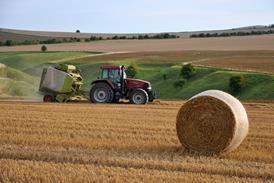




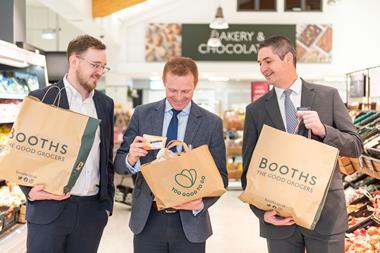
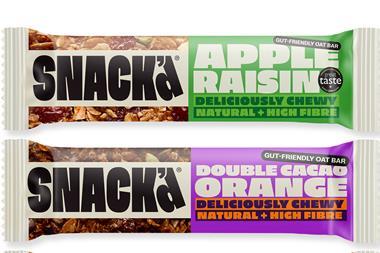
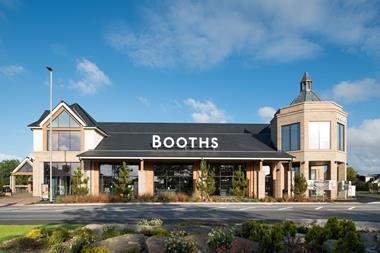

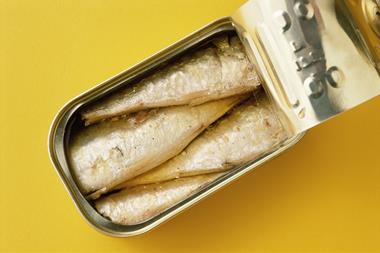


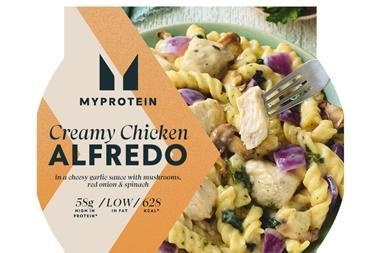


No comments yet